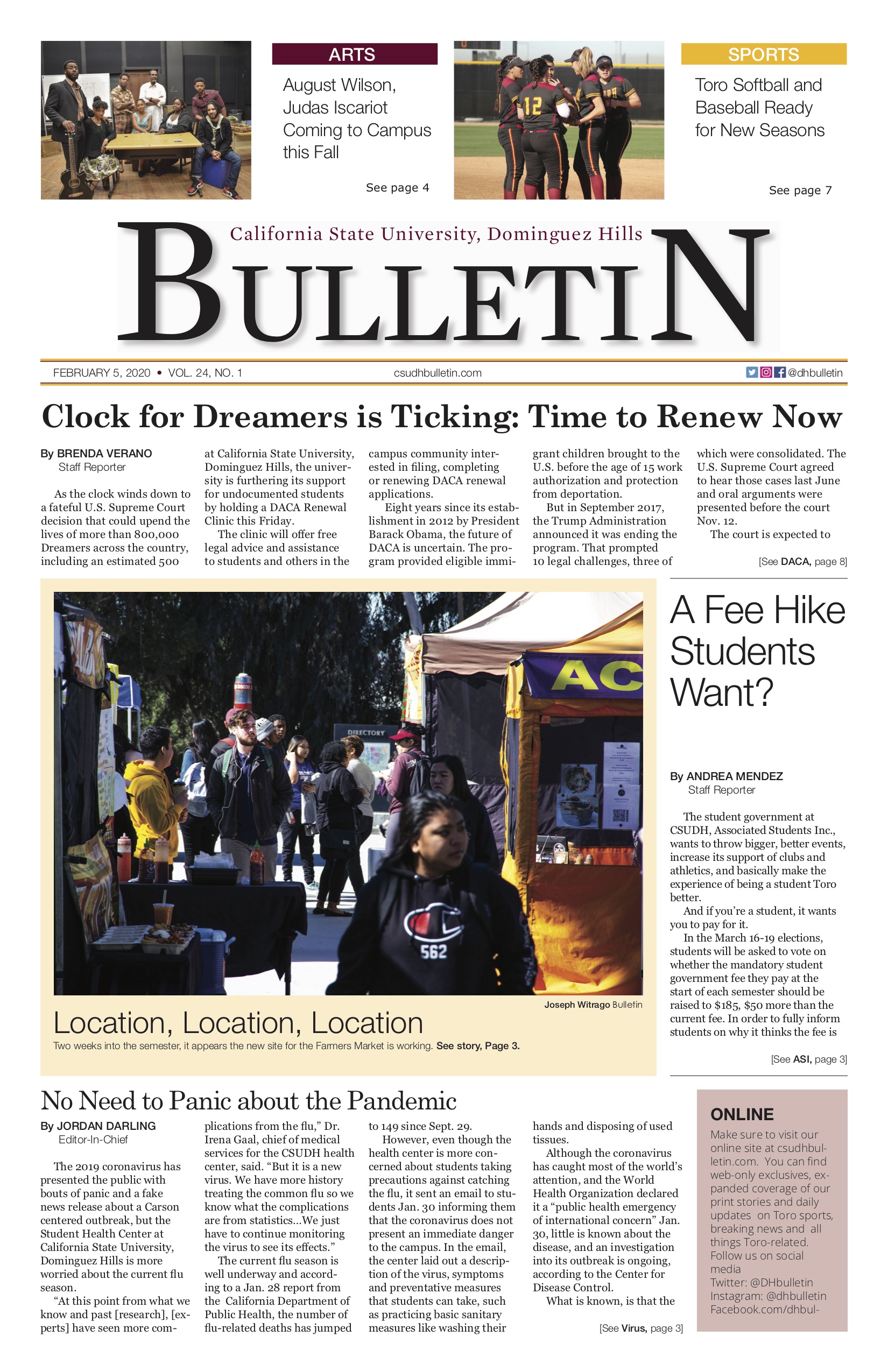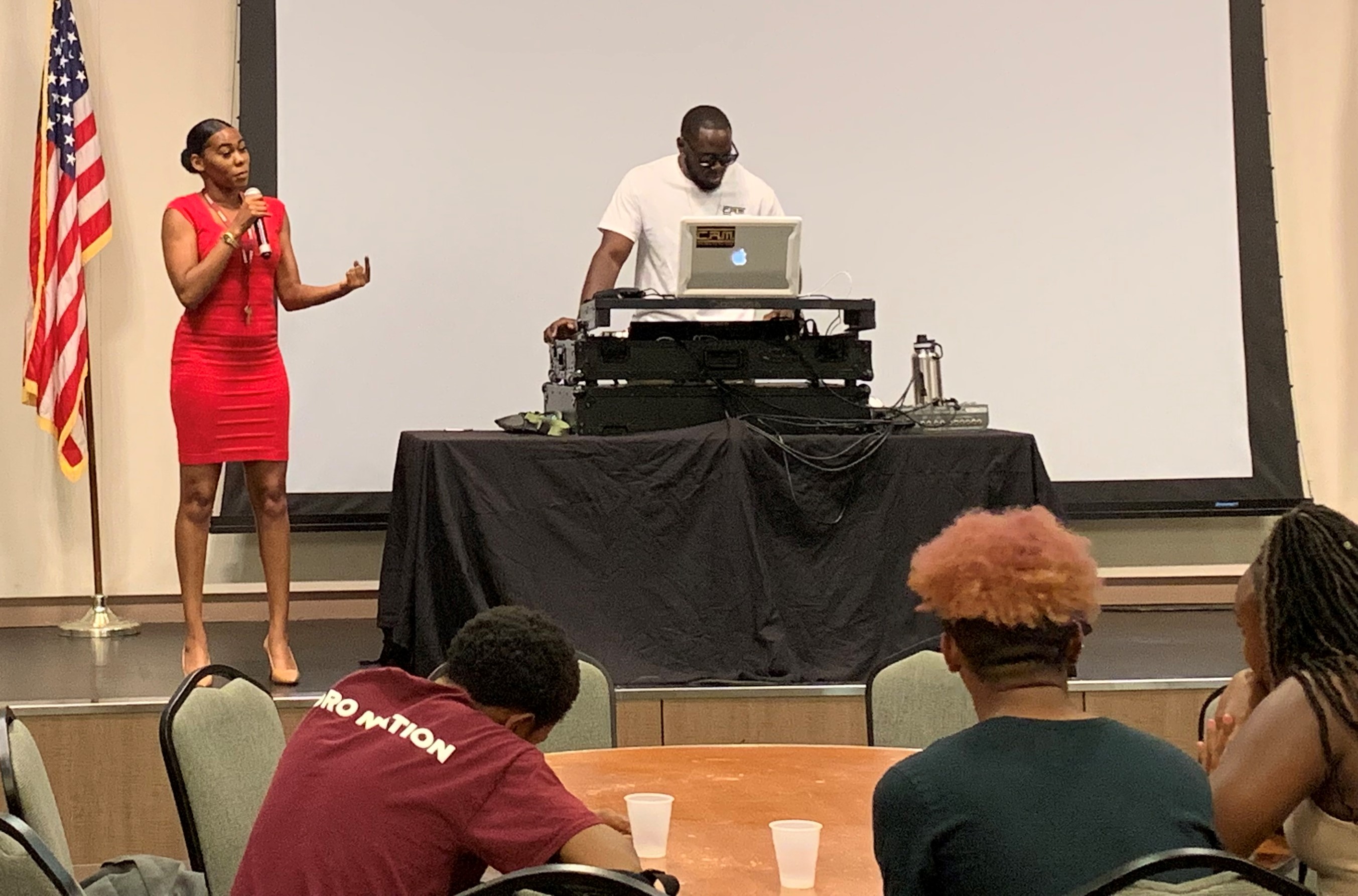CSUDH will be under construction until 2021
By Bria Overs
Managing Editor
California State University, Dominguez Hills will be under constant renovation over the next few years as old buildings go and new buildings are constructed.
On April 25, a university town hall was held in order to share and explain the upcoming changes happening on campus. These changes are the fruition of the CSUDH Master Plan, which is the vision that the university president and board of trustees have for the campus.
“In many respects, space is kind of like a department budget,” said Naomi Goodwin, vice president of administration and finance. “It’s a resource, so we often don’t think of it that way but it really truly is a finite commodity and something we need to consider as we move forward with our various buildings that are coming online, and the need then to accommodate moving people around in order to accommodate the new buildings.”
First on the list of upgrades was the Toyota Center for Innovation in S.T.E.M. Education, also known as the Science and Innovation building, which broke ground in October 2017. It will add 30 instructional spaces when it opens in spring of 2021.
Other than the Science and Innovation building, CSUDH should have about four new buildings/projects to take up the empty spaces around campus and provide new facilities to replace the older, outdated ones.
“Even looking at this campus, you can see how many of our buildings are pre-1978,” said CSUDH president, Willie J. Hagan. “So, the vast majority of our buildings have been out of date for some time. And, so, we’re well past due in terms of having the kinds of facilities that our faculty, [staff and students] deserve.”
The next item on the list is the currently under construction La Corte Hall recital hall. It is expected to be finished by the end of summer 2018, allowing for use in the fall.
Starting between January and February 2019, the Small College Complex buildings one through 13 will be demolished. The demolition will take away 18 classes and 16 offices where several departments are located such as the California Stem Institute for Innovation and Improvement (CSI3) and the American Indian Institute.
The Innovation and Instruction building will replace those facilities and add about 17 instructional spaces, including several floors of new large classrooms, office space and more. According to Hagan, both the areas inside and outside of the building can also be used for meetings and entertaining.
President Hagan feels that the Small College Complex has served its time in providing services to the campus community, but he said, “It’s time.”
Student housing will also get a new addition starting in the fall of this year. Hagan said the campus can expect to have a new four-story building with about 500 new beds and a separate commons area.
“Ultimately, I would like to see 1,500 to 2,000 [beds],” Hagan said. “I was talking to president-elect Thomas Parham and he thought that we should aim for 5,000. He feels that it would totally change the campus environment.”
Hagan expects the new housing to help students be more engaged with campus activities, but more importantly, their education by having more access to the faculty.
After all of this, the much talked about University Village will be built. According to Hagan, it will be the “money engine” of the university, providing revenue that will be used to meet other needs for CSUDH.
“It’s designed to meet the needs of the university in terms of staff and faculty housing, student housing, a business/research park… but also designed to generate revenue that will help offset the debt service for additional capital projects, in terms of new buildings or construction,” Hagan said.
According to the master plan, the university village is a public-private partnership that will feature retail stores, restaurants, apartments for students, faculty and staff, a one-acre park and a business park.
Because not all of the campuses needs are going to be taken care of with the creation of these new buildings, Hagan made sure to reassure the campus community.
“We are aware of the additional needs,” Hagan said. “Not everyone will benefit from an actual new building, but everyone will benefit from a transformative campus… There will be difficulties. But, at the end of the day, I think you can find that all the difficulties and the pain will be rewarding in terms of a campus that better serves our students and our faculty and our staff.”


